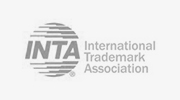11 May 2022
The metaverse is undoubtedly one of the biggest topics of the moment. There is no company that wants to be at the forefront that has not published about it or even made an appearance in the metaverse. However, although by now everyone knows, or at least has heard of the metaverse, this virtual world leaves some unknowns that we will address in this article in relation to trademark rights.
First of all, we must bear in mind that the metaverse, despite its widespread diffusion, is currently in its embryonic stage, although we do have some examples of metaverses such as Decentraland, Minecraft, The Sandbox and Axie Infinity among others, most of them, are at the moment, oriented only towards the video game sector. To date, there is no universal and unitary metaverse. While it is true that the latest technological advances, such as blockchain, 5G, IoT (Internet of Things) among others, are helping its development, the reality is that the idea of a unitary metaverse seems a technology still under construction, at least for another 5 or 6 years, since, despite the great advances, the current computing capacity is not sufficient for a development of such magnitude, which leads us to highlight the first problem in relation to trademark rights in the metaverse: the use.
EFFECTIVE USE OF THE BRAND
As we know, taking into account the European and Spanish regulatory framework in the trademark field, the holder of the trademark is obliged, from the date of registration, to use it effectively and actually in the relevant territory for the goods or services for which it has been granted, and it may be cancelled for lack of use five years after its registration. Therefore, it is not advisable to register trademarks for use in the metaverse if there is no plan to do so. With this, we are not saying that it is not necessary to review the trademark portfolio to adapt it to the metaverse environment, as there are currently trademarks that have not only been applied for in relation to use in the metaverse, as is the case of NIKE, GUCCI, L’OREAL, among others, but this registration must be accompanied by an intention to use them in this new environment to avoid possible cancellation.
On the other hand, it is striking to note the application for trademarks by large firms such as those mentioned above, which generally enjoy the overprotection of a well-known trademark, which would render the principle of speciality ineffective, i.e. their protection would not be limited to the goods and services they designate, but would be extensible to any genre or field of application. Thus, in principle, the trade mark with a reputation NIKE in relation to clothing goods in class 25 would not have to register the same digital goods in class 9.
TERRITORIAL JURISDICTION
Based on the principle of territoriality that governs trademarks, it is complicated to fit it into the metaverse, this being a virtual space with no defined territorial jurisdiction and whose accessibility can be carried out from anywhere in the world, and, assuming the metaverse in question is a DAO (Decentralised Autonomous Organisation). This begs the question: where do I have to register my trademark if I am going to use it in the metaverse? Or what would be the competent jurisdiction in terms of infringement?
Although the answers to these questions are not easy to resolve, the parallelism of the use of trademarks on the Internet, which is also a space without defined territoriality, accessible from anywhere in the world, can help us. Bearing this parallelism in mind, we can cite the Joint Recommendation on the Protection of Trademarks and Other Industrial Property Rights in Signs on the Internet, adopted by the Paris Union Assembly and the WIPO General Assembly, article 2 of which states the following:
“Use of a sign on the Internet shall constitute use in a Member State for the purposes of these provisions, only if the use has a commercial effect in that Member State as described in Article 3”.
Article 3 of the Recommendation sets out a number of factors which the competent authorities in each Member State must develop in order to determine whether the use of a trade mark on the Internet has a commercial effect in their territory, and which can be summarised as involving use in the course of trade of the protected goods and services.
This interpretation, in terms of jurisdiction over infringement of national trademarks on the Internet, gives rise to forum delicti commissi, i.e. jurisdiction of the court of the place where the harmful event occurred. In this regard, we highlight the “AMS Neve” judgment (Judgment of the Court of Justice of the EU (Fifth Chamber) of 5 September 2019, C-172/18 – AMS Neve and others).
On the other hand, for EU trademarks, in the same judgment the CJEU qualifies the application of the forum delicti commissi, indicating that it must be demonstrated that the alleged infringer was directing its activities towards that State, which is difficult to prove in the metaverse environment.
In any case, and if the competent jurisdiction is clear, this would lead us to the next obstacle, which is the identification of the offender, which we will see below.
DIGITAL IDENTITY
Currently, in metaverses such as Decentraland, the user’s identity is associated with a wallet, so the only possible identification is an alphanumeric code that is the wallet’s account number, which is why we consider that this would be the most necessary point of regulation in order to pursue online infringements.
While there is a tendency on the Internet to guarantee the anonymity of users, taking into account the advance of technology and its social and economic applications, there is a need for regulation in this respect, which would be detrimental to anonymity, but may provide more legal certainty in this area.
The EU has already taken the first step towards digital identity with eIDAS and the eIDAS2 proposal, which establishes the new framework for a “European Digital Identity”. This system envisages operating through European Digital Identity Wallets that will allow, among other things, filing tax returns, buying flight tickets or applying for university places or a loan.
In essence, we can conclude that a unitary metaverse is a project in the process of development and that legal regulation will be essential. In the meantime, as far as trademark law is concerned, we should not get carried away by a “Fear of Missing Out” as a result of excessive hype about the metaverse, but neither is it advisable to be oblivious to the technological updates that the future holds.




























Comentarios
No Comments